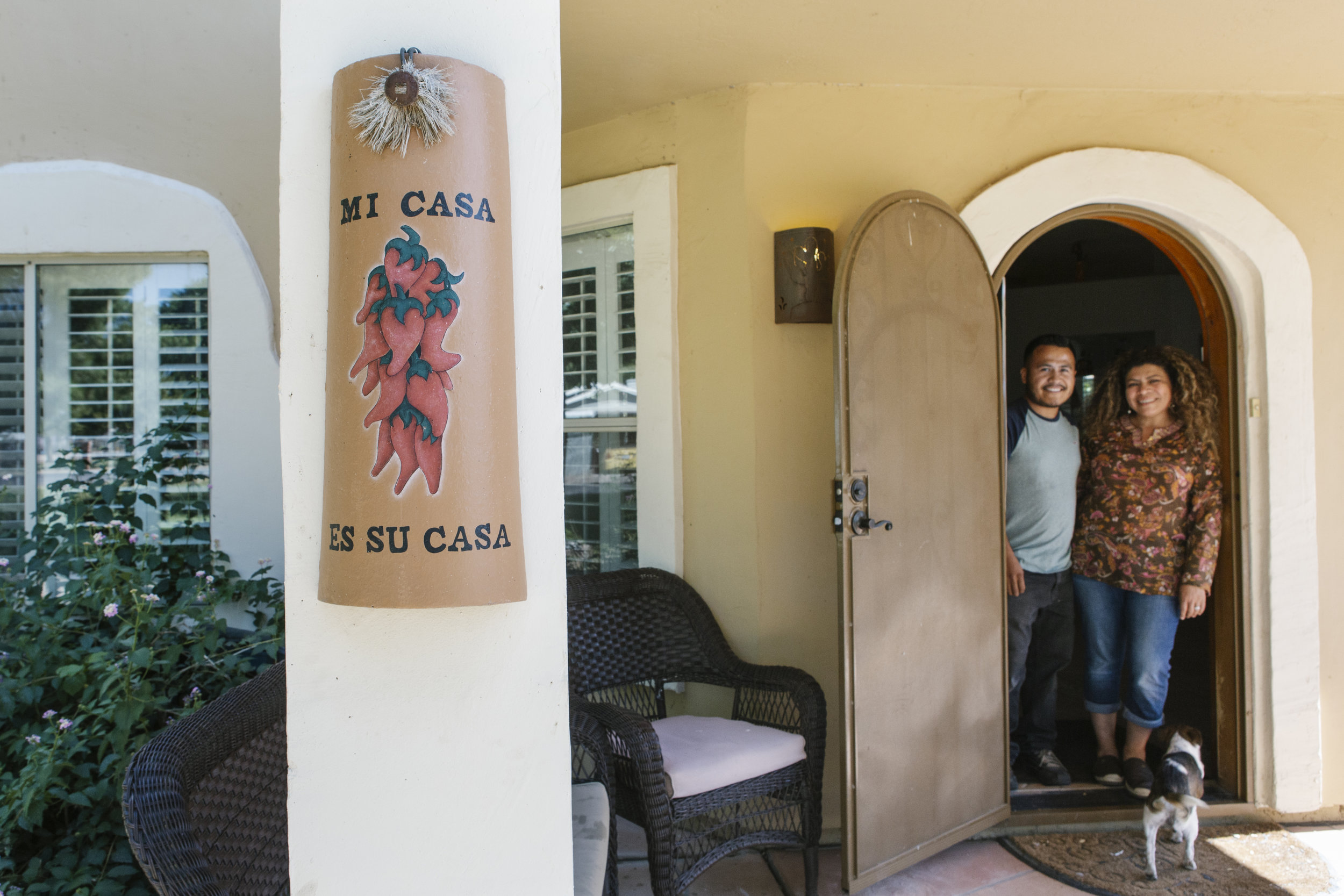Contributor: Twila Bird, TSOS
Photographer: Kristi Burton, TSOS
The next story from our partnership with Their Story is Our Story highlights the kindness and generosity of a family who decided to open their home to hundreds of Central American asylum seekers.
The welcome sign on the front pillar of Israel and Marta’s home isn’t just for show. They exemplify the saying “Mi Casa Es Su Casa” (My Home is Your Home). During the last nine months they have welcomed over 500 asylum seekers into their home.
When Marta was asked how she decided to get involved with helping asylum seekers, she replied:
Well, last December, it was all over the news. We have moms from Central America needing clothing — needing this, needing that. And my daughter said, “Mom, let’s go!” So we went to this address. We went to a church where asylum seekers were being dropped off by the busloads and it was chaos. My daughter, who brought some donations, unloaded them and said, “I’m leaving.” And I said, “Take my car, because I’m not leaving. I’m going to help here.” I think we arrived at like 10 a.m. on a Saturday, and at 10 p.m., I was still there.
Now I’m working regularly at a church here. We receive people there every Thursday. We also pick up people at the bus station [where ICE sometimes drop them off]. When the buses arrive, we all line up on each side of the walkway. And then we clap and say, “Bienvenidos! Bienvenidos!” That’s when freedom really begins to set in for them.
We put them in the sanctuary at the church. We explain what the process is at that point. We feed them. We get one of them to pray. And then we start making calls — making connections with their U.S. sponsors. And then we get clothes for them and put them through the showers. Once they’ve been clothed, fed, and showered, then we just wait for the confirmations and when arrangements are firm, we take them to either the bus or the airport for them to continue their journey. Some of them leave the same day.
Sometimes the church says we can only be there for 24 or 48 hours, so we look for host families. Once we received a hundred people who came late and needed host families right away. We ended up with four families at our house, each from a different country — a Guatemalan family, a Honduran family, a Salvadoran family, and a Nicaraguan family.
Israel [Marta’s husband] brought them home — I was still at the church helping out — and he told them, “We’re not going to be here. You’re more than welcome to do whatever you want. Our house is your house.” And then he left. When we came back, one of the ladies said, “Look! I made soup!” And I said, “What kind of soup?” She said, “Chicken soup!” I said, “Did Israel go and buy chicken?” She said, “No, one of the chickens from over there [pointing to a section of our yard].” So that was one of our pet chickens in the soup. I didn’t want to disappoint the lady. I mean, oh my gosh she ate my pet, but I didn’t want to make her feel bad so I ate the chicken. But now when the families come, I say, “You can eat whatever you want, just don’t mess with the chickens!”
We’ve been doing this for the last nine months and during that time we’ve had over 500 in our home.


